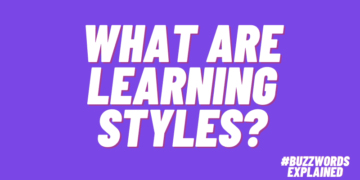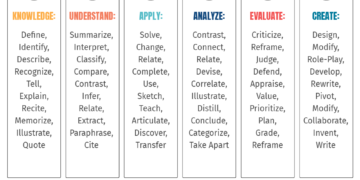Great Minds Think Unalike And Learn Differently
As humans we are very much alike; however, every person on this planet has their own set of unique neurological differences which makes them unique in their approach to workplace learning. There are different types of neurodiversity, and every organization should keep them in mind when designing learning experiences.
“Neurodiversity” is the term used to describe the entire spectrum of neurological differences that exist in humanity. It’s essential to understand how different types of neurodiversity can impact the way learners learn and process information.
What Is Neurodiversity?
The word “neurodiversity” refers to a diverse array of brains and minds. One way to think about it is as an umbrella for all kinds of minds. So, types of neurodiversity include autism, dyslexia, PTSD, ADHD, DCD, and much more. Or you can think about the word as representing people who operate differently from neurotypicals, commonly known as NTs.
Neurotypicals learn things more quickly in the ways that information is currently typically presented, whereas neurodiverse people may find it harder to process facts presented in this form. The latter may need more training time or different approaches because their brains are wired differently. So companies have to make sure that neurodiverse individuals are not ignored when it comes to training.
So, neurodiversity is defined as the variety of human brains and minds—different abilities, interests, and ways of processing information. In a sense, it’s part of a broader perspective that sees humans in shades of grey rather than in black and white. But, first…
Why Is Hiring Neurodiverse People Beneficial?
As an employer, hiring neurodiverse people can increase your organization’s productivity. Neurodiverse employees allow your organization to bring a wider range of perspectives and skills into play. This helps generate unique solutions that might not have been previously considered, increasing innovation and creativity.
Also, by bringing in a larger pool of talent to choose from, you get more right-fit candidates in your pipeline. Those who match well with your culture are more likely to stay longer and contribute at a higher level than those who don’t fit with it as well. Finally, there is some evidence that neurodiverse workers may be better team players or work better under pressure.
Critical Challenges Faced By Neurodivergent Learners
Individuals with neurodivergence can face significant challenges in an educational environment or workplace where accommodations are not made for their condition. Some of these challenges include:
- Difficulty retaining information presented by auditory means alone.
- Difficulty processing written information
- Problems with processing multisensory information presented simultaneously.
As a result, it is crucial to identify each person’s learning style so that you can tailor your approach when delivering new information. Otherwise, you run the risk of overwhelming people and/or causing them stress which will affect their job performance.
Tips For Designing Learning Experiences For Neurodivergent Learners
Because of their unique neurological makeup, it can be difficult for neurodiverse people to learn in a traditional classroom setting. Here are some tips on how to design effective learning experiences for neurodivergent learners.
1. Avoid Big Blocks Of Text
Text can be overwhelming for employees who are struggling with reading comprehension or who don’t feel a sense of connection to what they’re reading. However, let’s be honest…no one really likes big blocks of text. So, try chunking information into small sections and breaking up text with images. This will help to make sure that learners are paying attention and not just skimming through a series of words on a page.
Also, think about whether or not your presentation will be visually appealing to all participants. If visual learners can’t get a quick snapshot of key concepts, they may become frustrated and give up trying to learn. Lastly, be sure there is enough time in your training schedule for learners to go through and process all of their newly acquired information. If they feel rushed it might discourage them from paying attention during training.
2. Create Learning Content With DE&I In Mind
Most diversity and inclusion efforts focus on gender, race, ethnicity, or sexual orientation. Neurodiversity is just as important to include. If you have an employee with dyslexia, ADHD, autism spectrum disorder (ASD), Tourette’s syndrome, or any other neurological differences, you’ll want to start by adjusting your company’s onboarding practices. They may need extra attention during training, work, or eLearning.
The content of your course should be adjusted based on your employee’s learning style and skill level. You can even offer assignments that test visual memory versus auditory memory if they have a non-neurotypical learning difference, like dyslexia. Be sure that what you are presenting is clear, concise, and memorable.
3. Give Clear And Concise Instructions
Good instructions guide users through a design and keep them from getting stuck. Whenever you’re working on a new eLearning experience, break your employees into three groups: visual learners, auditory learners, and kinesthetic learners. Then think about how you can tailor your instructions accordingly.
A big part of designing for neurodiversity is ensuring that your instructions and prompts are clear, so employees can make sense of them. This means creating some extra wiggle room in your process so that users can skip steps if they get stuck or want to try a different approach. If you don’t consider how different people will approach your learning content and design—their needs, abilities, and personalities—you won’t be able to support everyone effectively.
4. Create Individual Learning Content
It’s important to recognize that people that fall into different types of neurodiversity learn differently. As a manager of a learning environment, it is your job to create unique and personalized training methods that work for each individual. There are a wide variety of learning styles. Even if an individual has no diagnosed learning challenges, not everyone learns in exactly the same way.
Some may have strengths in one style of learning and weaknesses in another. Some may have weaknesses in every style other than their own, and some people don’t fit any typical pattern at all. When it comes to designing learning experiences for these individuals, an understanding of their particular challenges can help you design content that they’ll be able to access and utilize better than others would be able to. There are lots of resources online that can help you figure out how each type of neurodiversity in the workplace might need to be accommodated.
Great Minds Think Unalike. They Learn Differently Too.
Different people have different learning styles. Some are visual learners, others are auditory learners, and still others prefer learning from doing or by reading. The fact is that many people learn in various ways at different times, depending on their personal needs and interests.
At school and work, it’s crucial to provide an environment that can accommodate all types of learners. As you delve into each type of neurodivergence, you will see how workplaces must be able to cater to these needs for everyone to succeed equally, as well as they should.

WeLearn Learning Services
We are on a mission to build better humans through learning. We are your partner for beautiful, thoughtfully designed learning experiences that are modern, relevant, engaging, and impactful.




















